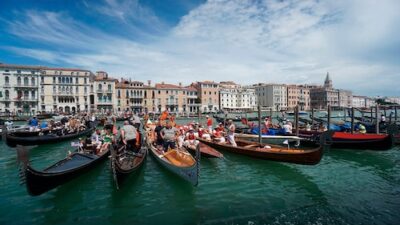The report indicates that wine, being predominantly an urban-centric beverage, experienced the consumption decline more severely than other alcoholic drinks. Founder and CEO Rajeev Samant stated in an interview with PTI, “After 3 years of robust growth, FY25 was more a year of demand reset for the Indian wine sector.” He pointed out that temporary market disruptions, including the general and state elections in pivotal regions like Maharashtra, impacted demand.
“But the positive news is that these challenges are now behind us as we anticipate a more normalized domestic macro environment entering FY26,” Samant remarked.
Despite the setbacks, Sula Vineyards achieved a record operational revenue of ₹619.4 crore in FY25. “We maintained our leadership position, remaining by far the largest wine brand in the nation,” Samant communicated to shareholders.
Also read | Liquor prices rise in Maharashtra as state cabinet hikes excise duty
The company remains optimistic about the upcoming year. Samant mentioned, “Now the worst is behind us,” expressing confidence that the firm will experience stronger momentum and growth in FY26. He highlighted planned expansions in the company’s own brands and wine tourism sector, supported by anticipated economic stability, as vital drivers. The firm aims for “accelerating earnings growth over the next 3 years (FY25-FY28) with enhanced EBITDA margins and capital efficiency.”
This growth strategy is underpinned by various initiatives, including product development, increasing production capacity, enhancing market reach, and strengthening the direct-to-consumer (D2C) channel. The company is currently “on track to expand Cellar capacity by 1 million litres, reaching a total capacity of 19.2 million litres per annum by the end of FY26.”
Samant noted a promising change in wine consumption trends across India. “Our domestic Own Brand sales, excluding Maharashtra and Karnataka, experienced an 8 percent YoY growth, bolstered by a total of 11 states showing healthy double-digit growth. This aligns well with our goal of establishing a truly pan-India presence.”
Also read | In India, wine culture takes off — with a vineyard scene that’s worth a trip
India’s wine market, valued between $150–200 million, still remains relatively small by global standards. With annual sales exceeding 3 million cases, the segment contributes to less than 1% of the nation’s overall alcoholic beverages market. Per capita wine consumption in India is below 50 ml, starkly contrasting the global average of 5.5 litres, highlighting significant potential for growth.
Sula predicts that “moving forward, the Indian wine market is anticipated to grow at a 15 percent CAGR over CY 2023–2028, driven by rising prosperity and disposable income, rapid urbanization, shifting consumer preferences, and an increase in the number of working women and female drinkers.”
In addition to winemaking, Sula’s wine tourism division is showing substantial growth. Its two resorts in Nashik—‘The Source at Sula’ and ‘Beyond by Sula’—are thriving, featuring a total of 104 rooms. A third property with 30 rooms is under construction near the company’s York Winery in Nashik, while Domaine Sula in Karnataka is also set for expansion.
“In FY25, our wine tourism revenue increased by 10.2 percent YoY to Rs 60.3 crore, propelled by the very successful SulaFest’25, along with strong performances from our resorts. Our resort occupancy rose by 400 bps from 74 percent in FY24 to 78 percent in FY25, driven by a vibrant festive and wedding season,” Samant concluded.



